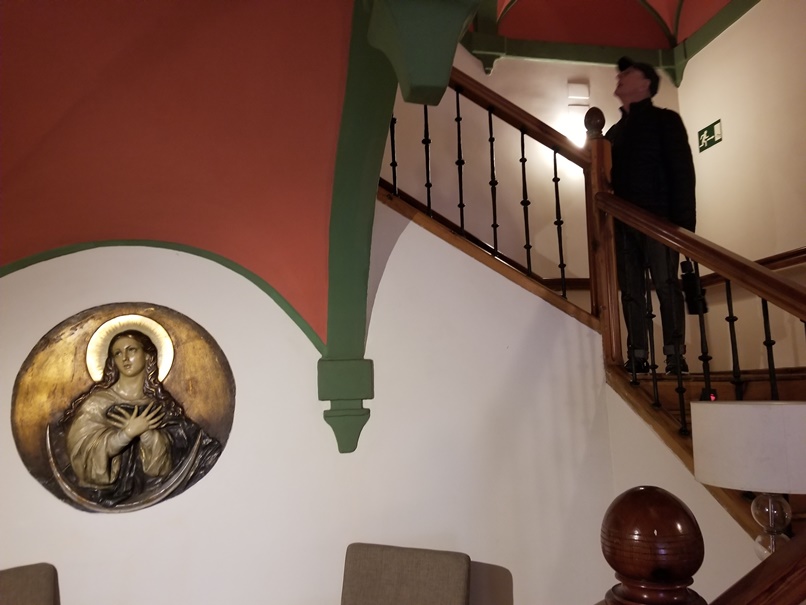Spain – Cuenca
The drive from Albarracin to Cuenca is stunning. Towering rock formations, canyons, rivers, and lakes kept our attention riveted on the scenery as we wound our way around steep bends into the mountains, down into valleys and through farming communities.




A narrow country road led us the last few kilometers to Cuenca, which merges with the dramatic natural landscape. It sits like a medieval fortress atop a limestone spur where two river gorges – Rios Júcar and Rios Huécar – meet.

We drove through the impressive triple archway into the Old Town, crossed Plaza Mayor, then navigated a steep, narrow, cobblestone road to Hotel Convento del Giraldo, a converted convent that dates back to the 17th century.



Once again, we scored a win with our choice of a hotel full of old-world charm. Although the convent has been completely reimagined, elements of the original architecture – such as the dramatic, winding, central staircase – have been preserved.


I had asked for a suite full of natural light and lovely views. My request was more than fulfilled. The views from our two balconies were like landscape paintings. I found myself wanting to sit and stare at the scenery, as steel grey clouds rolled in, dropped a torrent of water, then drifted off, giving way to sunshine, which created a dazzling depth to the hues of the landscape.




Plaza Mayor, the central plaza, while generous in size, has a charming coziness to it. Inside the triple archways, bars and restaurants housed in brightly colored buildings, spill outdoors and the imposing Gothic Catedral of Nuestra Señora de Gracia, watches over the plaza. Cuenca was founded by the Moors in the 8th century. In the 12th century, the city was conquered by Alfonso VIII, and the Cathedral was built on a site previously occupied by a mosque.

Ask anyone about Cuenca, and they’ll mention the Casas Colgadas – the Hanging Houses, which perch precariously on the edge of limestone cliffs, their wooden balconies dangling in midair over the gorge, where the river Huécar flows.
The most astonishing facet of Cuenca is its art scene, which took root in the early 20th century. The Museo de Arte Abstracto, which features a captivating collection of works by Spanish abstract artists, is housed in one of the hanging houses; and the Fondacion Antonio Perez – also known as the Center for Contemporary Art – has a spectacularly diverse collection of modern art displayed over four floors.

It’s no surprise that in 1996 Cuenca received Unesco world heritage status. This magical town, which in the fall is blissfully tranquil, is a multifaceted treasure.



We were keen to explore underground Cuenca – the Tunel de Alfonso VIII. I have a fascination for caves and tunnels, but unfortunately, the tunnels were closed on the day that we visited. Next time!
San Pablo bridge, suspended over Huécar Canyon, connects the Old Town to the San Pablo convent. A walk across the bridge and down some steep steps leads to a path at the bottom of the gorge. It’s a peaceful and beautiful way to begin or end a day in Cuenca, strolling along the trail looking up at the limestone peaks and the town towering above you.

